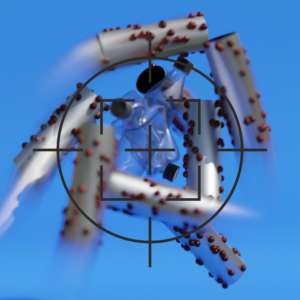Czech scientists develop nanorobots that can remove microplastics from water
Nanotubes of titanium dioxide powered by UV radiation and hydrogen peroxide as a fuel have been developed by scientists from CATRIN, the Center for Energy and Environmental Technologies (CEET) and the Faculty of Electrical Engineering and Computer Science of VSB-TUO in cooperation with colleagues from CEITEC-VUT in Brno. These so-called nanorobots were developed using defective and atomic engineering in order to capture microplastics in water. The work opens up new possibilities for the use of light-driven nanorobots in water purification technologies.

In a study published in the journal Advanced Functional Materials, scientists developed a nanorobot that can irreversibly capture microplastics in polluted water with high efficiency on a timescale of the order of tens of seconds. As model microplastics, they used spherical particles of about 5 mm in size.
Using defective and atomic engineering, the scientists were able to control the direction and speed of movement of the nanorobots in water. Titanium dioxide nanotubes, with a diameter of about 250 nm and length of several microns, were prepared by electrochemical anodization. Oxygen defects in the titanium dioxide structure were created by ignition in a hydrogen atmosphere. Platinum atoms were added into the defective structure using deposition techniques.
The scientists showed that by creating defects in the structure of titanium dioxide, nanorobots move at a higher speed in the x–y plane. Moreover, the incorporation of platinum led to the phenomenon of negative photogravitaxis, enabling platinum-enriched nanorobots to move against gravity in the z-axis direction. Such control over the speed and direction of motion of nanorobots offers potential in a range of environmental, chemical or biomedical applications.

